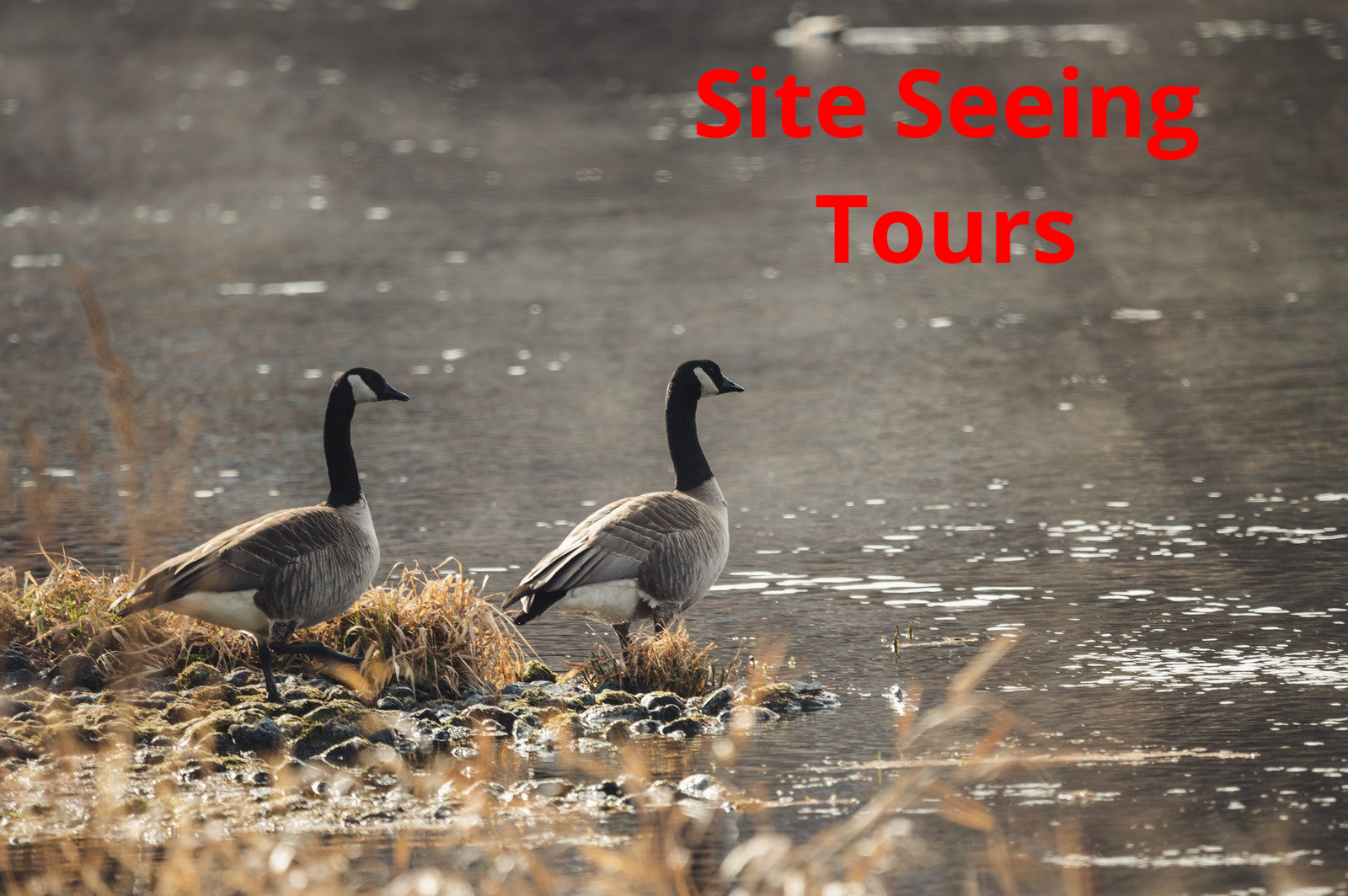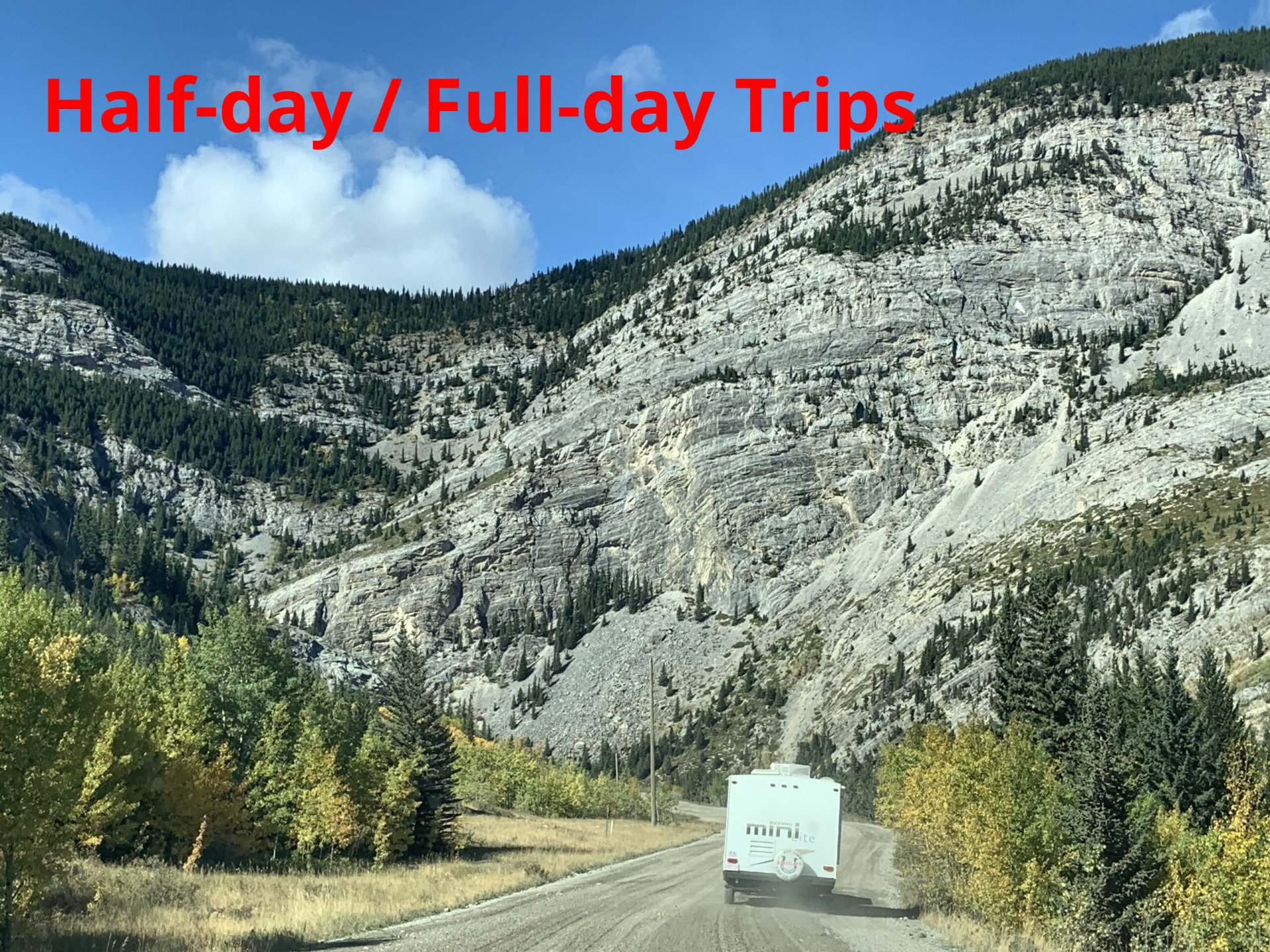BOW RIVER FLY FISHING
Do the tail water “City Float”
Fly fishing the Bow River tail water, float through the heart of the city with a population of 1.3 million people and then enjoy the Calgary night life.
Let's go!
The Famous Tail Water “Prairie Float”
Below the city of Calgary the Bow River meanders and cuts through the Alberta Prairie.
Listen for the Big Browns sip up the latest hatch, and then feel your heart race as they slowly grab your presentation.
Set away from the City life you won't believe the Incredible Fishery just down stream of Calgary. There is something for everyone.
ALBERTA FLY FISHING
Walk and Wade Alberta's Rocky Mountain Freestone Streams
Alberta offers some of the best Cutthroat and Bulltrout fishing surrounded by our beautiful Rocky Mountains and Foothills
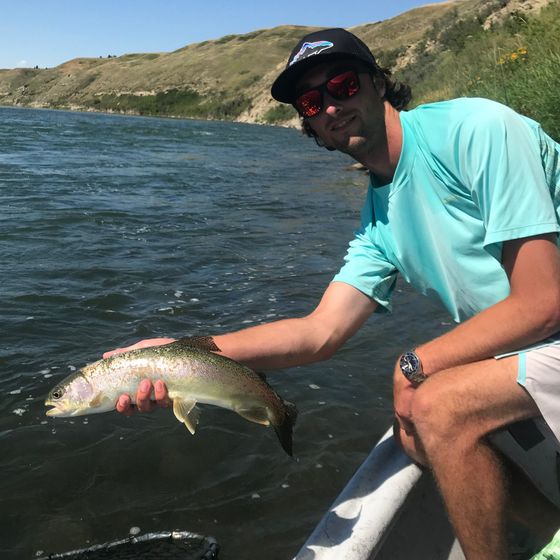
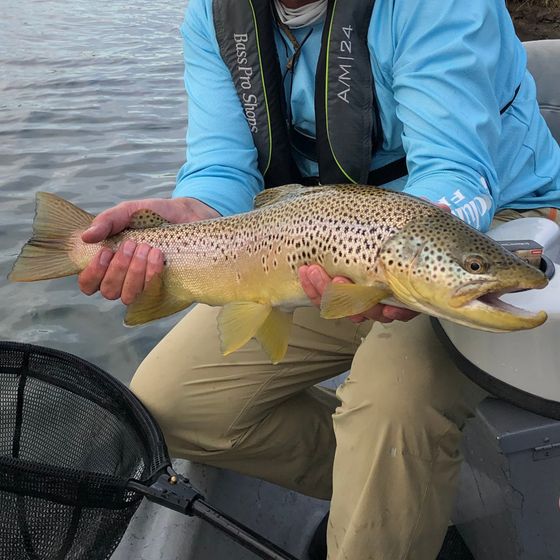
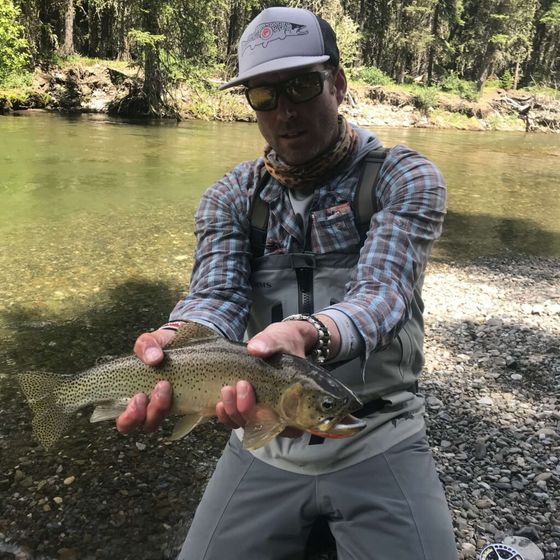
FLY FISHING THE BOW RIVER
The Bow River starts in the Rocky Mountains of Banff National Park, flowing out of the glacier fed Bow Lake. The river then flows east through several communities of which the largest being the City of Calgary, below Calgary the river starts to cut deep into the Alberta prairies. The section that most anglers float is within the city limits and approximately 55 km downstream from Calgary to the Carsland weir. This section is nutrient rich and produces large Rainbow and Brown trout. The section below the Carsland weir produces some large fish as well and is mainly accessible by jet boat only.
The Bow River is currently open to fishing year-round from the Banff National Park border to the Carsland weir. Locals fish the river year-round, taking advantage of the warm Chinook winds that frequently provide us with winter temperatures well above freezing. Winter fishing success is generally achieved while Nymphing, using patterns such as the San Juan Worm, zebra midge, Blood Worm, Prince Nymph, stoneflys and pheasant tails. Streamers can also produce some nice fish including large pike, although less frequently.
The Bow River contains several desirable angling species including Rainbow, Brown, Cutthroat, Bull Trout, Pike and the occasional Lake Trout. The river also contains an abundant population of mountain white fish along with Burbot and suckers. All species listed above have been caught on the fly, so you may end up with some surprises. I have heard tales of Brook Trout and Walleye being caught as well. Other species include the Longnose Dace, Longnose Sucker, White Sucker, Mountain Sucker, Trout Perch, Brook Stickleback and Spoonhead Sculpin.
.
The Bow River is strictly a catch and release system between the Banff Park boundary and the Carsland Weir. Although there are studies done that show a small mortality rate from catch and release there are practices and procedures we use to handle the fish properly in order to reduce the chance of mortality. Most fly fisherman on the Bow River use barbless or pinched barbed hooks which reduces harm and allows for a quick, clean release of the fish with minimal handling. If you do need to handle the fish then holding it on its back can settle the fish down which may allow you to retrieve the hook with your forceps. Never grab the fish by the gills! When releasing the fish gently hold it by its belly with one hand and the head facing upstream in the water. This gives the fish the flow of oxygen it needs and allow it to recover. Once you feel it can swim on its own then let her go for another day.
When taking a picture, remember that this fish just fought for its life and may be exhausted, holding it out of the water for any amount of time is like us running a mile and then sticking our head under water, we can’t breathe and recover. Keep the fish submerged in the net and have someone ready with the camera, plan your shot before removing the fish from the water, you should use one hand under the belly of the fish, lift, snap, put it back, always keeping the fish over the net or the water in case you drop it. A well planned picture will only expose the fish to air for only seconds.
Practicing catch and release and proper fish handling will allow us to enjoy this fishery for years to come.
Bow River Hatches
Feb/Mar
Midges, Winter Stone, Skwala
April/May
Midges, Winter Stone, Skwala, Blue Wing Olive (BWO), Western March Brown, Crane Fly, Yellow Sally, Pale Morning Dun (PMD), Mother’s Day Caddis, Leech, Griffiths Gnat.
June
Blue Wing Olive (BWO), Western March Brown, PMD, Golden Stones, Caddis, Worm, Leeches
July
Caddis, PMD, Pale Evening Dun (PED), Golden Stone, Yellow Sally, Green Sally
August
Hoppers, Crane Flies, Tricos, Caddis, Mahogany Duns, Ants, Beatles.
September
October Caddis, Hoppers, Ants, Tricos, BWO, Water Boatman and Backswimmers
A multitude of bird species make the Bow River home and use it as a stopover during migration as well. It is not uncommon to see nesting pairs of Bald Eagles and Osprey and the occasional Golden Eagle, even in downtown Calgary. Trumpeter Swans have been noticed wintering on the Bow River alongside the ever present Canada Goose, Goldeneye and Mergansers. Others you may encounter include Downy Woodpeckers, Cedar Waxwings, and Northern Flicker. By far the largest bird on the river and quite abundant during the summer months is the Pelican, frequently observed in groups on the water and squadrons in the sky. Another frequent flier observed is the Cormorant.
Mammals observed along the river within Calgary and below include Beavers, Muskrats, Otters, Deer, Moose and Coyotes with the occasional Cougar and Black Bear. On the upper reaches of the Bow River in Banff National Park and downstream to the Town of Cochrane you may find Elk, Deer, Moose, Black Bears, Grizzly Bears, wolves, Cougar and Big Horn Sheep.
FLY FISHING ALBERTA'S ROCKY MOUNTAIN STREAMS
Alberta is blessed with a multitude of streams and rivers that flow east from the Rocky Mountains onto the Alberta prairie along with a few amazing prairie spring creeks.
Alberta consists of six main river basins; the South Saskatchewan basin is the main area of my guiding operations. My mountain walk and wade trips focus on three mountain watersheds, the Highwood River, the Oldman River and the Castle watersheds. Other options include the Waterton, Belly and St Mary’s rivers further to the south. Within these watersheds can be found some of the best Cutthroat, Rainbow and Bull Trout fishing anywhere in North America. With my focus on Southern Alberta the closest and most productive rivers I enjoy taking clients to are the Oldman River, the Livingston River, The Crowsnest and the Castle Rivers. These rivers flow through some of the most beautiful country in North America, making the scenery alone worth the trip. But of course that’s only part of the reason why we visit these waters. These rivers flow east from the continental divide and rely on snow pack in the winter along with spring and fall rains to replenish the ground water and their flows, with virtually no glacial contribution. The majority of river access is through Crown land (owned by Albertans) with public camping allowed on Crown Land with the purchase of a seasonal permit. There is plenty of private land along the Crowsnest and to some extent along the Castle and Highwood rivers, generally if you can contact the land owner an ask permission for river access the answer is usually yes, but don’t trespass, that gives anglers a bad name.
Gear
As far as gear goes, waders and wading boots are recommended, I find aluminum cleats provide the best traction. Carrying bear spray is recommended and travel in at least groups of two making lots of noise, this is bear country, but they are seldom encountered. Let someone know where you are planning to fish and carry a Zoleo, there is little cell service in most areas. A four weight rod for Cutthroat and a six weight rod for Bull trout is recommended.
Depending on the season make sure you have at least the following flies: hoppers, ants, beetles, golden stoneflies, salmon flies, stimulators, brown, grey and green drakes, PMD, caddis, pheasant tail nymph, prince nymph, stonefly nymph, Hairs ear nymph, flashback caddis and baetis nymphs.
Click here for Pre-Trip Information List.
The Fish
These waters hold some of the last pure strain Westslope Cutthroat trout in Alberta along with Alberta’s provincial fish the Bull Trout. Both these species are protected by law in these watersheds and must be released. These rivers are a mecca for dry fly fishing, that’s why we fly fish.
The Cutthroat can often not pass up a floating meal as long as it matches the hatch of the day but they can be very finicky and target only one specific hatch, so it can be frustrating some days trying to figure out the right fly. Some will say that cutthroats are the dumbest fish and easy to catch but these fish will give you a challenge one day and take just about anything that resembles a bug the next. Having said that, these fish will provide the first time fly fisher with a fun filled day of top water action and if you’re not careful, will get you hooked on fly fishing for life. On those challenging day’s nymphing will produce some nice fish as well, dropping a nymph over a ledge or bouncing along the bottom to the tail end of a pool will often produce fish, oh and yes you may catch some healthy whitefish with this technique as well. These waters contain a healthy population of Rocky Mountain Whitefish and some very large ones at that. The Whitefish are an important part of this ecosystem as they are an important food source for Bull Trout, Cutthroat and further downstream, Rainbow and Brown Trout. The Whitefish are also an indicator species of a watersheds health, lots of whitefish equals healthy watershed.
The lower Oldman and entire Crowsnest also contain some very nice Rainbow trout, Brown Trout and Cutbows, these are hard fighting fish and will take the same presentations as the Cutthroat. Below the reservoir, the Oldman also holds large Brown, Rainbow and Bull Trout.
The Bull Trout is the apex predator in this mountain streams and mainly eats other fish, both Cutthroat, whitefish and sculpin but is not opposed to feeding on aquatic bugs and terrestrials on the surface as well. Often an angler will catch a Cutthroat and have large Bull trout appear from the depths to try and take advantage of the situation and steel your Cutthroat, this usually results in a scream of shock and then excitement from the angler. I have had Bull Trout come and swallow a 14 inch Cutthroat I had hooked, not uncommon. Bull Trout can be found in just about any section of the river but tend to prefer the deep pools, waiting for prey to wash over a ledge into the darkness. Streamers are the go to fly pattern for Bull Trout, sinking line and heavily weighted streamers for the deep pools or just stripping lighter rigs by large rocks and ledges can also be productive. This fish is more elusive and sometimes harder to catch but when you do hook into one you will know it.
Fishing these waters is truly an amazing experience from the beginner to the expert fly fisher. These waters are accessible from Calgary on a day trip basis or if you are willing to camp, a two to three day fishing experience on these waters is a treat you will not forget.
Mountain Stream Hatches
Spring (Season open June 15)
Dries: March Brown, Adams, Yellow and Orange Stimulator, Chubby Chernobyl, Elk Hair Caddis, PMD and Ants all season.
nymphs: Pheasant tail, Prince, Girdle bugs, Jimmy legs, flashback caddis, Hairs ear,
Streamers: sculpin patterns, bow river bugger, Clouser minnows in pale pink, red and white or orange. Larger streamers with Cutthroat or whitefish colours.
Summer (July August)
Dries: Yellow Sally, Elk hair caddis, Parachute Caddis, Brown, Grey and Green Drake patterns, Ants, Beetles, hoppers, Caddis, PMD, Royal Wulf.
nymphs: Pheasant tail, Prince, Girdle bugs, Jimmy legs, flashback caddis, Hairs ear, evil weevil, lighting bug, golden stones.
Streamers: sculpin patterns, bow river bugger, Clouser minnows in pale pink, red and white or orange. Larger streamers with Cutthroat or whitefish colours.
Fall (late August to end of October)
Dries: Hoppers, ants, beetles, Western Green Drakes, BWO, Caddis
Nymphs: Prince, Hairs ear, pheasant tail, orange stimulator, caddis.
Streamers: sculpin patterns, bow river bugger, Clouser minnows in pale pink, red and white or orange. Larger streamers with
Cutthroat or
whitefish colours.

